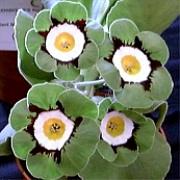Sedum Society
Description
THE NEWSLETTERS
We are an international society publishing Newsletters in October, January, April, and July. We aim to post them at the beginning of the month of publication. To date, we can say, with hands on our hearts, that every Newsletter issued has been distributed on time, with our most distant members receiving copies before the middle of the month of publication. We aim to publish around 100 pages of news and views about Sedoideae each year with colour photographs, maps, sketches, and other illustrations. The Newsletter has articles on every aspect of Sedum: nomenclature, taxonomy, cytology, cultivation, history, medicine, literature, habitat location etc. Although we emphasise genus Sedum, the society covers the closely related genera, including Rhodiola, Hylotelephium, Rosularia, Orostachys, Mucizonia and Sinocrassula. Regular articles appear by recognised authorities in their field such as Henk’t Hart, Gordon Rowley, Charles Uhl and enthusiasts from most continents. Since its launch in 1987, the Newsletter has evolved and grown into an indispensable reference source acquired by a growing number of botanic libraries.
In addition to the newsletter, the facilities offered by the society include the following:
Members send in seed which they have collected during the year. Members also acquire material on offer from botanic gardens throughout the world. We then publish a list of all the seed available, normally in the January newsletter. Members then request seed from the list which is distributed free of charge in the Spring. Organised by Mr. Les Pearcy.
We have produced a list of books, papers and journals owned by members and containing information on Sedum, Members can request a photocopy of relevant parts of any of these for the cost of the photocopying and postage. Organised by Ray Stephenson.
Early in the year, members who wish to participate send in lists of those sedums (and related) plants in their collections which are large enough to allow a few cuttings to be removed without spoiling them. We then return to the participating members a combined list of all of the species and varieties available with the details of the members who offer each one. They may write to any member shown to grow the species and varieties they want and request unrooted cuttings. Not only is this the best and cheapest way in the world to acquire Sedum species, it increases the likelihood of preserving plants in cultivation. Organised by Mr.Ray Stephenson.
Members can send for a list of slides owned by the Society, and may borrow small quantities. The Librarian cares for the Society’s collection of 35mm slides, many of which were taken by Ron Evans and Reid Moran. If you would like a list of the slides available, write to him. He will advise you of the deposit required and the cost of postage should you decide to borrow some slides. Organised by Ray Stephenson.
A list of members is published periodically and distributed with the Newsletter. We find that members have set up a large network of correspondence between each other. Organised by Mr. Les Pearcy.
If you send in a cutting of any Sedum we will do our best to identify it for you. Your Chairman has a most diverse collection of Sedum plants, recognised by the NCCPG as the National Collection of Sedum. He is willing to try to identify any cuttings sent to him. If possible, note the colour of the flowers, and say where you obtained it. It is usually difficult to identify a plant from a single photograph. Organised by Mr. Ray Stephenson.
These are available in sets corresponding to the subscription year. All of these except for issue 4 contain all the colour photographs as supplied originally. There is an order form available on request. Available from Les Pearcy.
We offer handsome binders, with the society name blocked in gold on the spine, which have space for 24 copies of the Newsletter Available from Les Pearcy.
was published by Timber Press of Oregon in the last few days of 1994. It is the result of 5 years of work, collating information gathered over most of a lifetime in an attempt to produce an up-to-date book on the subject. The 356 page hardbacked treatise has 110 colour plates, 100 monochromes and sketches. Copies are available from Les Pearcy (profits to the society). Other literature is periodically available from the same source.
GENERAL INFORMATION
The Sedum Society is organised informally by a few dedicated enthusiasts who give up their own time freely and pay subscriptions in the normal way. It is a non-profit making organisation which aims to provide its members with good value for money. Senior officers who oversee the society and through their generosity make its existence possible:
Ray Stephenson, Chairman and Editor of the Newsletter. He considers all suggestions made by members with respect to the society. The Newsletter is a forum for all members whether inexperienced in the growing of stonecrops, or experts in their field. Ray tries to balance within a year the material offered for publication. It is important that comments and articles are sent to him so that he can formulate articles. Line drawing are particularly welcome for publication. It would be appreciated if long articles intended for publication could be forwarded on disc. Ray also oversees printing and then collates and posts the Newsletter.
Contact Addresses
Ray Stephenson
8 Percy Gardens, Choppington, Northumberland, NE62 5YH, England
(email [email protected]
{Phone : (+44) 01670 817901, evenings}
Les Pearcy
43 Hawleys Close, Matlock, Derbyshire, DE4 5LY, England
(email [email protected]
{Phone (+44) 01629 582595, evenings}
Sedum Society Subscription / Renewal
UK £10.00 Oct ’06 – Sept ‘07
35-38 39-42 43-46 47-50 51-54 55-58 59-62 63-66
67-70 71-74
Binders for Newsletters (£6•00 each inc P&P) £____
BMP format at image resolutions up to 1280 x 1024.
slides 353 to 528. CD4 has all 528 slides in BMP format at image resolution
up to 800 x 600.
CD5 has all 528 slides in JPG format at both resolutions.




